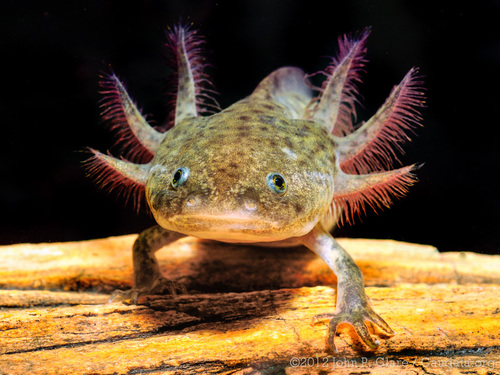
Axolotl
The axolotl, Ambystoma mexicanum, is a captivating amphibian famed for its limb regeneration and perpetual larval state. Native to Mexico's Lake Xochimilco, this 'walking fish' sports feathery gills and thrives in freshwater, highlighting nature's marvels and ecological balance.
10-20 years
Lifespan
60.0 - 200.0 g
Weight
Length: 15 - 45 cm
Size
Brown, Grey, Black, White, Pink
Color
10 mph
Top Speed
Critically Endangered
Conservation Status
Decreasing
Population Trend
Characteristics
Ambystoma mexicanum, commonly known as the axolotl, is a unique amphibian native to Mexico. It is known for its remarkable ability to regenerate limbs, and it retains larval features throughout its life, such as gills and a finned tail. Axolotls inhabit freshwater lakes and canals, particularly Lake Xochimilco. They play a crucial role in the local ecosystem as predators of insects and small aquatic organisms.
Distribution Range of the Axolotl
Ambystoma mexicanum, commonly known as the axolotl, is native to Mexico. Specifically, it is found in the remnants of the Xochimilco lake complex near Mexico City.
Axolotl's Habitat
Environmental Conditions
The axolotl inhabits high-altitude freshwater lakes and canals. It prefers still or slow-moving waters with abundant aquatic vegetation. The climate in its native region is temperate, and the water temperatures typically range from 14 to 20 degrees Celsius (57 to 68 degrees Fahrenheit).
Ecological Niche
Axolotls are aquatic amphibians that play a role in their ecosystem as both predator and prey. They feed on small fish, worms, and aquatic insects. Their unique adaptation includes retaining juvenile features throughout their life, such as gills, which allows them to remain fully aquatic (a condition known as neoteny).
Copyright @ Nature Style Limited. All Rights Reserved.
 English
English